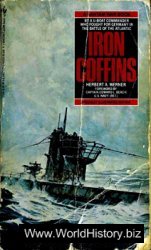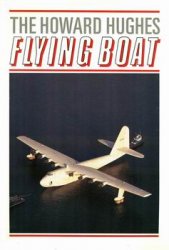'Ehe importance of water transport, both as a practical means of communication and as a recurring religious metaphor, arose inevitably from the existence of the river Nile and its tributaries as the principal artery of communication in ancient Egypt. The prevailing w ind in the Nile valley came from the north, .so that sails could be used to propel boats travelling south, while those heading north, against the wind, relied on oars and the current. For this reason, the hieroglyph for ‘travelling north’, e en in the case of overland travel, consisted of a boat with its sails down, while that for ‘travelling south’ shows a boat w ith billowing sails. Boats were already being used as early as the Gerzean period (r.3500-3100 B(;).
-A great deal of information has survived concerning Egyptian ships and boai. s, principally in the form of depictions on the walls of tombs, funerary models and textual references. There have also been a number ol finds of actual boats, ranging from the reconstructed ¦sor. AR bark of Khufu (2589-2566 b(.) to the fragments of boat timber preserved through their reuse for such purposes as the construction of slipwavs.
Travel by boat was so ingrained in the Egyptian psyche that it was considered natural to depict the sun-god ra travelling through the sky or the netherworld in his bark. However, when sailing outside the Nile valle>, on the Mediterranean or Red Sea. the ships seem to have stayed close to the sltorc. Unlike the Greeks, the Egyptians were evidently not enthusiastic seafarers.
Rt, both as a )n and as a se ine itablv Nile and its »f communi-railing w ind orlh, so that ts travelling , against the :nt. Tor this [ling north’, consisted of lat for 'trav-lowing sails, early a. s the
Las survived oats, princi-thc wails of xtual refer-iber of finds
Ined in the ered natural ng through 1 his bark. Nile Nallcy, a, the ships lore. L iilikc vidcnlh not

Probably the earliest and simplest boats were p. a.pvrus skiffs, made of bundles of reeds lashed together. These would have been used for fishing and hunting game in the mar. shes, for crossing the river and for travelling short distances, and this type probably remained in use throughout Pharaonic history. Even from predynastic times there is evidence for larger vessels, though perhaps still of reed construction. Painted pottery of the Naqada period shows elaborate, many-oared, ships with numerous sailors. The prows and sterns of such vessels are usually upturned; they would normally have been provided wdth at least one large steering oar, and sometimes also a sail and cabin.
The boats and ships of the Old Kingdom (2686-2181 Bc) were usually made of \(X)D
Model boats frequently accompanied burials of the Middle Kingdom and symbolized the pilgrimage to Abydos. 12th Dymisty, c.1900 hc., provemince unknown, ii. of hull 10.2 cm, L. 60.7 an.
Obtained either locally or from Syria-Palestine. They had a characteristically curving hull and were usually provided with several steering oars, a mast and a long narrow sail. Oars would also have been used for propulsion when there was insufficient breeze to fill the sails. 'The best-known surviving Old Kingdom boat is that found beside the pyramid of Khufu at Gi/,, which was made of large planks of wood ‘sewn’ together with ropes. Rather less elaborate vessels would have been used to transport stone from the quarries to the construction sites of pyramid complexe. s. The reliefs dcco-fatmg the causeway of the pyramid complex of Tinas (2375-2345 bc) included depicti(tns of the boats carrying the great granite papyrus columns for his valley temple.
The typical craft of the Middle Kingdom (2055-1650 13C.) were similar in design, although, from the late Old Kingdom onwards, the steering oar was operated as a rudder by means of ropes. The mast was collapsible and rested on a stand when not in use, while the cabin was usually located at the stem. Many models of these boats have survived in tombs, where they played an important role in the funerary cult, symbolizing the journey of the deceased to.bvdo. s. There are also surviving fragments of timber from actual vessels reused for slipways and ramps in the pvramid complexes at kl-i. isht.
In the New Kingdom (1550-1069 bc) ve. s-sels seem to have become more specialized;
There were usually cabins on both the stern and the prow in addition to a main cabin in the centre of the boat. The helmsman operated double steering oars by a system of ropes and levers as before, and the width of the sail was greater than its height. 'The Egyptian navy of this period was put to the lest w'hen it repulsed the invasion of the Si-;.A I’iioiT. KS, according to the reliefs of Rameses in (1184-1153 bc) at mkdint. t ii. abl. As in the Old Kingdom, huge masses of stone were also moved by barge, including obbi. i.sks for the temple of Hatshepsut (1473-1458 bc) at deir EL-B. AiiRi. 'fhe same queen also sent a seaborne expedition to funi‘. A late 20th-Dynasty literary (or possibly quasi-historical) text, The Report of Wenamun, outlines a sea-journey by an official to obtain timber from BYBLOs; this expedition was initially unsuccessful due to Egypt’s poor political fortunes at the time (see iierihor).
Boats of the Late Period (747-332 uc) seem to have remained roughly similar, but the stern was generally higher. With increasing Greek influence from the S. AITE period onw-ards, however, sea-going vessels began to be modelled on those used by the Greeks and Phoenicians, and by the time of the sea battle of Actium, between ci. i:op. atra vu (51-30 BC) and the Roman consul Octavian (later Emperor Augustus), the Egyptian ships appear to have been similar in design to those of the Romans.
G. A. Reis. ner, Models of ships and boats (Cairo, 1913).
P. Lipkk, The royal ships of Cheops (Oxford,
1984).
M. Bik'iak, ‘Zur Marine des Altcn Reiches’, Pyramid studies and other essays presented to I. E. S. Edwards, ed. J. Baines et al. (I. ondon,
1988), 35-40.
D. A. JONKS, 4 glossary of ancient Egyptian nautical titles and terms (London, 1988).
R. H. WiLKiN. soN, Reading Egyptian art (London, 1992), 152-7.
S. Vinson, Egyptian boats and ships (Princes Risborough, 1994).
D. A. JONE. s, Boats (London, 1995).




 World History
World History









